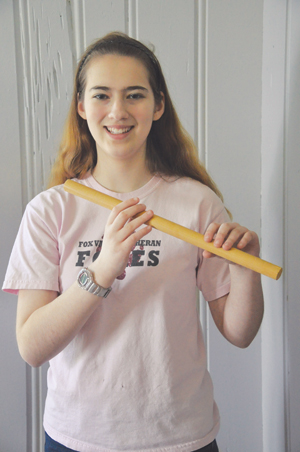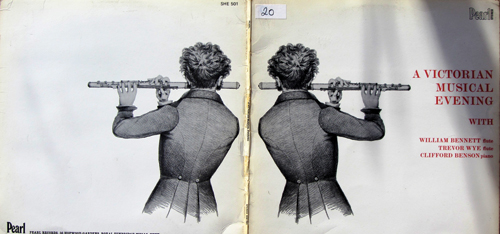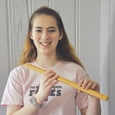 One of my favorite Feldenkrais lesson tapes has the student lying on his left side on the floor. The arms are stretched out in front with one on top of the other and palms together. The knees are bent. During the lesson, the student practices minute stretches of the right arm forward and back and then the right knee moves forward and back. Eventually the teacher instructs the student to move both the right arm and right knee forward and then back at the same time. After a few stretches, the arms move forward as the knees move back. For almost 35 minutes, the student repeats these minute stretches over and over again.
One of my favorite Feldenkrais lesson tapes has the student lying on his left side on the floor. The arms are stretched out in front with one on top of the other and palms together. The knees are bent. During the lesson, the student practices minute stretches of the right arm forward and back and then the right knee moves forward and back. Eventually the teacher instructs the student to move both the right arm and right knee forward and then back at the same time. After a few stretches, the arms move forward as the knees move back. For almost 35 minutes, the student repeats these minute stretches over and over again.
Having studied ballet for an extensive period of time, I thought it was unusual to keep doing these stretches on one side only because in dance pedagogy, generally the student performs the exercise to the right and then immediately to the left. Finally in the last minutes of the instructional recording, the instructor said, “Turn over to the other side and begin the stretches again.” To my surprise movement on the right side was much better than what I had been doing on the left. After I finished the session, I thought, “We always play flute off to the right. What if we played off to the left?”
Because of the design of the keys of the flute, it is awkward to play the flute off to the left. I went out to the garage and found a 1" diameter dowel rod that was about two feet long. (Future students sawed-off the handle of an old broom or mop.) I pretended this was my flute and set out to the play left-handed flute. This means the right hand is now on top and the left hand is on the bottom. I started by slowly playing a C major scale. This means the RH fingering is 1000 and the left hand fingering is 0004. I proceeded up the one octave scale, correcting myself as I instinctively returned to old fingering habits. I found it took so much concentration to play the scale with the opposite hands. I had to concentrate on which keys were down for each note and which keys were lifted for another.
The next student to come for a lesson was playing the Griffes Poem. As you may recall on page 3, there is a cadenza that employs harmonic fingerings as well as regularly fingered notes. The student was having difficulty getting the flow going, so I decided to have him finger the passage on the rod as if it was a left-handed flute. First he fingered a C major scale to get familiar with the concept of playing with the opposite hands, and then he tried the cadenza. I watched him very intently, correcting him when he reverted back to right-handed flute fingerings. He repeated the exercise three times and then played the passage on his flute. We were both shocked at how much better he could play the passage and found that most of his old problems had been fixed – and, best yet, it only took a few minutes and a very inexpensive dowel rod.
Playing a left-handed flute was more common in the early days of flute playing when the instruments lacked keys and a sophisticated embouchure hole cut. Folk instruments, especially of the Irish variety, were often played left-handed. There are several contemporary manufacturers who make left handed flutes today.
A few years ago I remember seeing a picture of the Doppler brothers with one playing to the right and the other to the left on a record jacket. I recently corresponded with Trevor Wye about this picture. Here are his comments:
Dear Pat,
Thanks for your letter. I wrote the programme notes for an LP double record sleeve, which William Bennett, Clifford Benson and I made in the late 1960s, the first of several. In the programme notes, I wrote that the Doppler Brothers were “believed to have played the flute like that…”
This is completely untrue. There is no evidence that they did anything of the sort. It is an opinion gleaned from elsewhere and which I much regret quoting as it has been a source of annoyance to Doppler aficionados and for a while, strained Anglo-Hungarian relations!
Because of this note, the record producers used my engraving of Charles Nicholson c. 1825 and taken from his Preceptive Lessons, and reversed it on the double record sleeve as shown.
The record became popular, many quoting this nonsense about the Brothers. My heartfelt apologies to Carl and Franz – and to Hungarians everywhere.
All good wishes,
Trevor

All joking aside, practicing playing flute off to the left on a dowel rod is an excellent practice technique and one that should be employed when nothing else seems to work. When working with oboe, clarinet, and bassoon players, I have the player simply reverse his hands putting the right hand on top and the left hand on the bottom. The successful results always surprise both the student and me.






